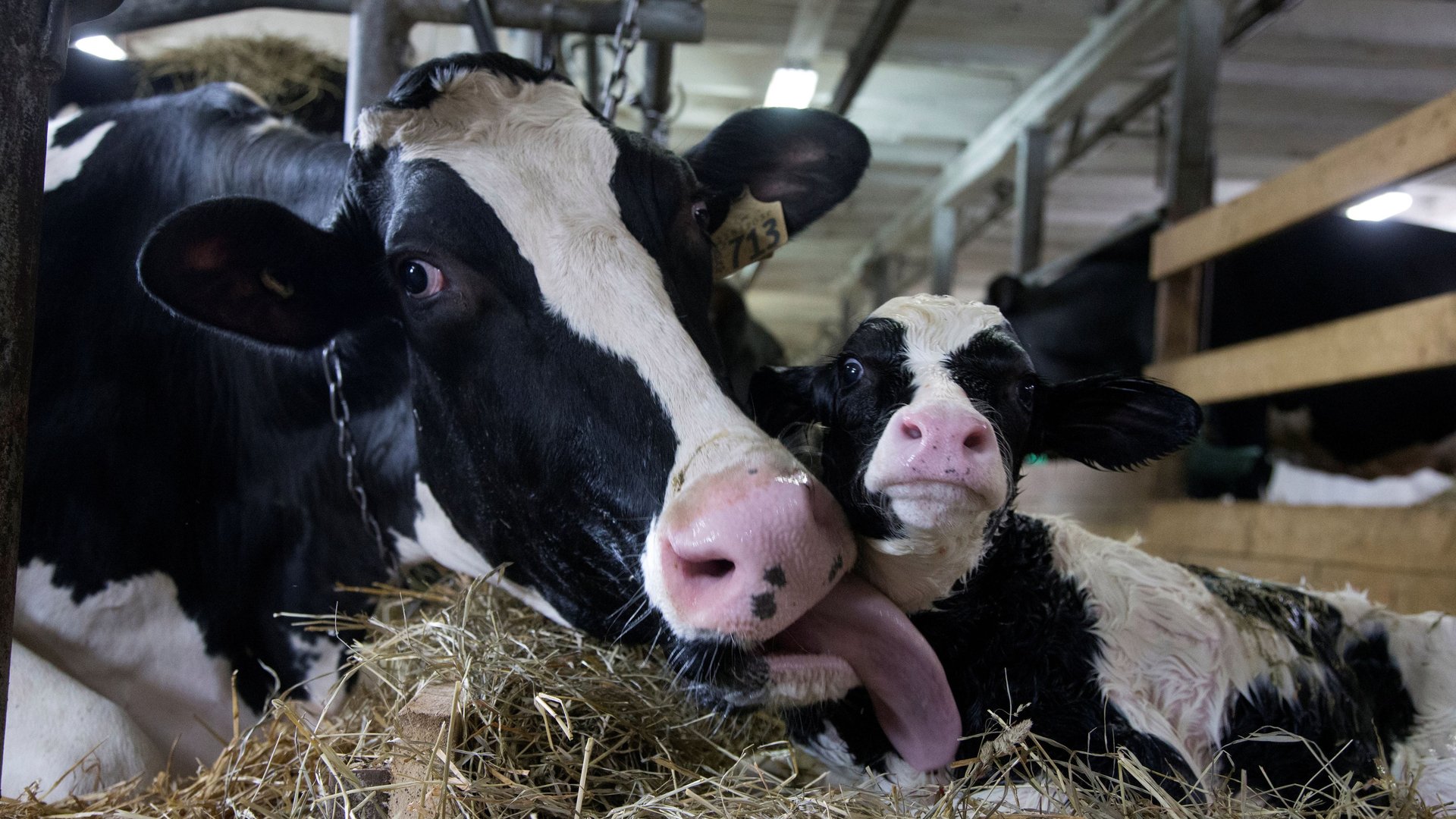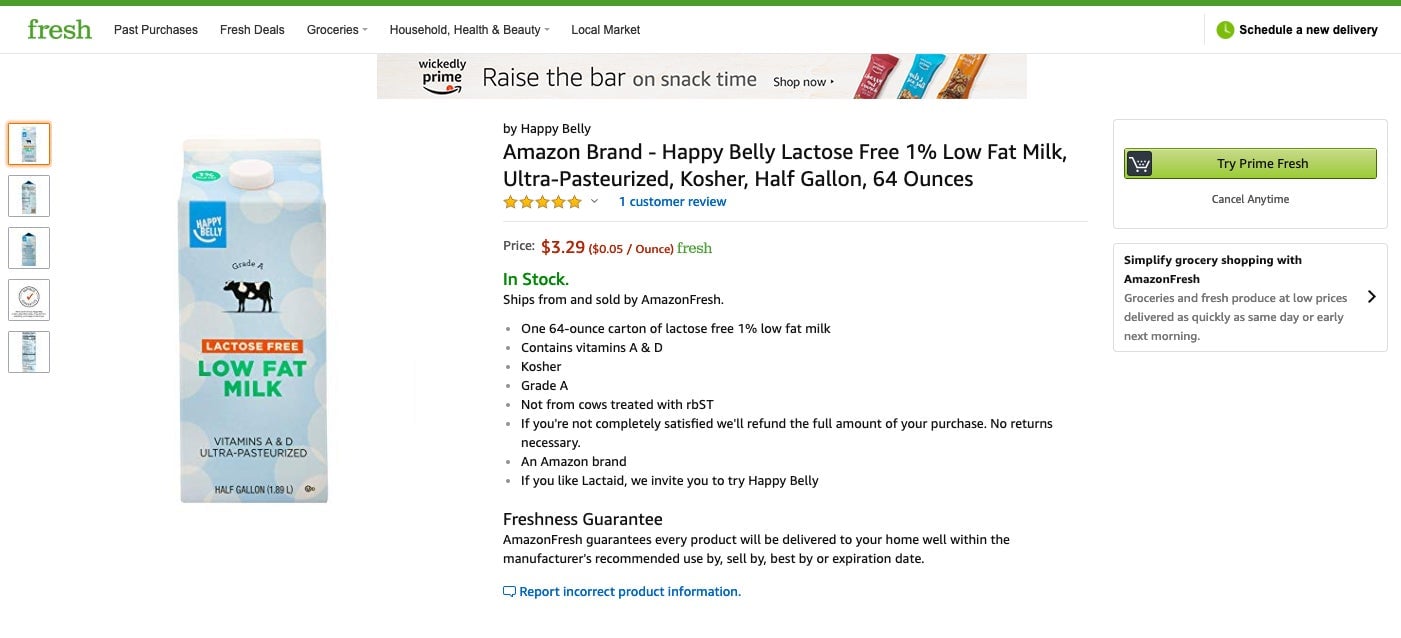Amazon’s got milk
Amazon is getting into the milk business through privately owned brand Happy Belly.


Amazon is getting into the milk business through privately owned brand Happy Belly.
The Happy Belly dairy items, spotted by brand tracker TJI, include various kinds of lactose-free milk (1%, 2%, whole, fat free), half and half, and whipping cream. “If you like Lactaid, we invite you to try Happy Belly,” reads a description on a product page, which also identifies Happy Belly as “an Amazon brand.”
The prices compare favorably to Lactaid. A half gallon of Happy Belly 2% reduced fat milk, for example, is currently priced at $3.29. A half gallon of the comparable Lactaid product sells for $3.88 at Walmart.
The catch is that Happy Belly dairy products have limited availability. You can order them in some markets through Prime Now, Amazon’s on-demand delivery service, or buy them at an Amazon Go store, Amazon’s chain of automated convenience stores. You can also purchase Happy Belly dairy products by subscribing to Amazon Fresh, Amazon’s $14.99-a-month grocery delivery subscription that can be purchased on top of a regular Prime membership.
Amazon seems to be hoping Happy Belly’s dairy products will help attract new users to Fresh. Where Amazon’s buy button would usually be for a regular Amazon shopper or Prime customer, the product pages for Happy Belly milk and other dairy items instead feature an avocado-green button to “Try Prime Fresh,” which leads to a page where you can sign up for a free 30-day Fresh trial.

Amazon spokeswoman Nell Rona told Quartz in an email that Happy Belly is the first of its brands to offer milk and dairy products, excluding private brands it gained in June 2017 with its purchase of Whole Foods Market. Happy Belly started selling eggs in 2016 and milk and cheese in 2018, Rona said. Its cheese offerings include sliced provolone, blocks of cheddar, and a Mexican four-cheese blend.
Grocery has proven a white whale for Amazon, which has tried to break into the delivery of fresh foods for more than a decade, largely unsuccessfully. Amazon first unveiled Fresh on Mercer Island, a Seattle suburb, in 2007. The program expanded slowly but never caught on the way Amazon’s flagship Prime membership did, perhaps because the idea of spending $180 a year for grocery delivery on top of an annual Prime subscription was unattractive to the typical Prime user.
Amazon’s acquisition of Whole Foods prompted speculation that the company would overhaul its grocery delivery model using Whole Foods’ more than 400 stores as delivery hubs. A few months after the deal closed, Amazon partially shut down Fresh delivery in at least nine states.
Grocery delivery is a perilous line of business because the margins are so thin. The typical grocery keeps just $1 to $3 of every $100 that shoppers spend. Money is made not by getting customers to order groceries once, but many times over a month or year. How does this relate to milk? Well, dairy products like milk and eggs are a staple for many households. That means grocery shoppers are more likely to order from your site or shop at your store if they can buy those products there along with everything else.
Grocers online and offline are leaning heavily on private labels to set their stores apart, according to research from Food Marketing Institute, and milk or non-dairy substitutes top the list of categories from which shoppers say they purchase private-label goods. Amazon has been pushing into private- and exclusive labels for the better part of a year, not only in grocery but also clothing, furniture, electronics, and healthcare and beauty, among other things. According to TJI, Amazon at last count owned 137 private-label brands.